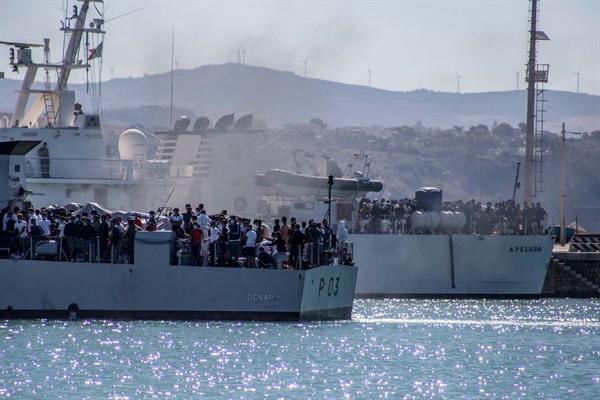The Mediterranean Sea is still the principal corridor for migrants trying to enter the European Union, and Italy is in effect its front door. Hundreds of thousands of people have attempted this risky maritime route, often paying a deadly toll, including well before the migrant and refugee crisis of 2015. Between 1993 and 2018, around 27,000 people drowned at sea in the Mediterranean. But war, desperation and the hope for a better future keep pushing migrants and refugees from the Middle East and North Africa, and further afield, to embark on this perilous voyage.
The coronavirus pandemic hasn’t deterred them, either. But it has changed the situation for the worse on the other side: Since COVID-19 started ravaging Italy, the Italian government has tried to close more of the country off to migrants.
After the coronavirus struck Italy in March and turned it into one of the world’s worst hotspots, the government declared the country’s ports “unsafe” for ships carrying migrants and refugees rescued in the Mediterranean, through a decree that ran until July 31. It was the first decree of its kind in Italy’s history. “For the entire duration of the health emergency, due to the outbreak of coronavirus, Italian ports cannot be classified as ‘safe places’ for the landing of people rescued from boats flying a foreign flag,” it declared.

